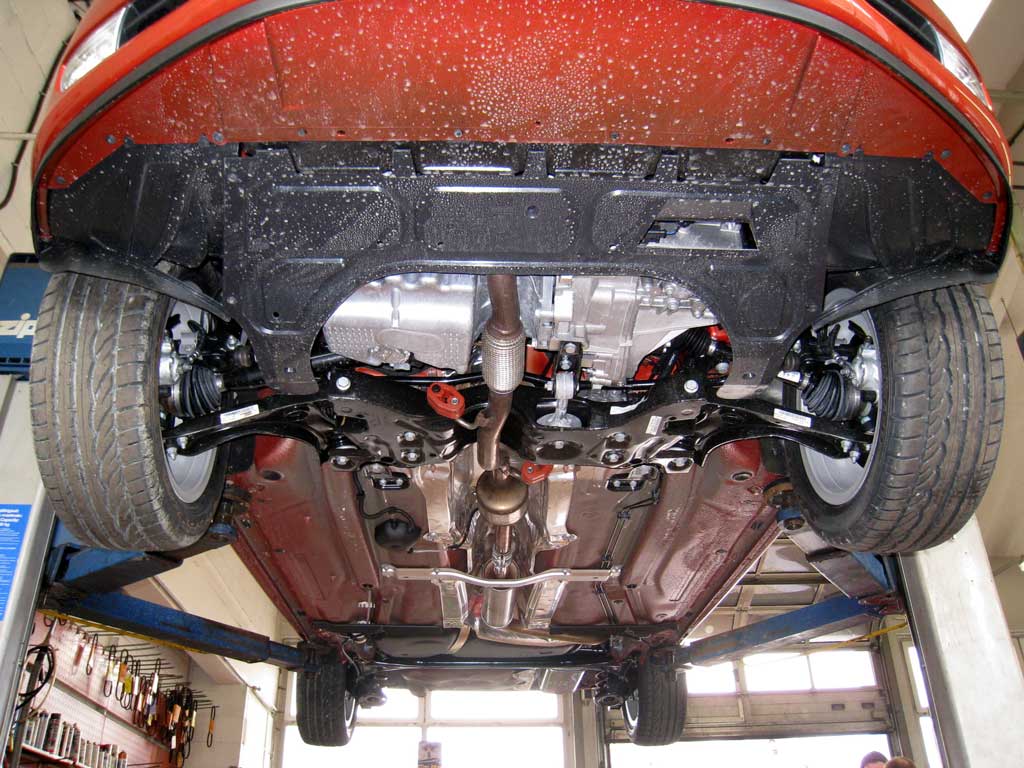
There was a time when cars could begin to show signs of rust after just a few years on the road, especially in areas near the sea and where lots of salt grit is spread on the roads in winter. Luckily, those days are largely over, because most manufacturers now pay much more attention to providing a good level of corrosion resistance in-built from the factory.
Exceptions are possible, though, especially for cars that are subject to light damage underneath – even small chips can let rust take hold – vehicles driven hard off-road, and imported cars that come from areas with a warm climate where rust proofing isn’t applied to the same standards as officially imported products.
What is underseal?
Underseal is a paint-like finish that can be applied to the chassis, inside wheel arches and to any exposed metal parts underneath the car (excluding suspension, the exhaust and braking components) to prevent rust. It’s very tough, so it can fend off stone chips and some variants will even self-heal if damaged, to prevent water from getting in.
There are different types of underseal, from cheap bitumen products that are best for older, less valuable cars to help keep them on the road, to wax underseals that cost several hundred pounds that are applied by a professional. While undersealing can be tackled by any home DIY mechanic, it’s quite a tricky and messy job, so a professional’s know-how can pay dividends in the long run. A car lift also makes the job much easier and safer than axle stands.
When should underseal be considered?
Underseal shouldn’t be necessary for the vast majority of new vehicles, unless they have been imported from a mild country where anti-corrosion measures aren’t adequate to cope with wet British weather and gritted roads. Serious off-road fans may also want to consider underseal if they plan on driving their vehicles regularly in muddy, wet and tough conditions.
Where underseal can be very useful, is for older vehicles and any car where the underneath of the car has been scraped or dinged. Manufacturers use galvanised steel with a zinc coating to fend off rust, and if this is compromised, rust can set in. To help reduce the chance of underbody rust, it’s best to try and wash off the bottom of the vehicle with a pressure washer frequently when driving over gritted tarmac in winter. If rust is spotted, treating and removing it and then applying underseal can extend the car’s life.
Applying underseal
Unless it’s a cheap car with only a few years of life left, we’d avoid bitumen, as it can crack over time and become compromised. After a few years, this has the potential to make the situation even worse. For more valued and valuable cars, a professionally-applied wax underseal is a better bet, as it will provide added protection and should last much longer – although top-ups may be required every so often.
When applying underseal yourself, ensure the underbody is completely clean and dry, with any rust taken care of before starting. Protect areas like the exhaust, brakes and paintwork, and ensure any pieces of trim like wheel arch liners have been removed in advance. Then apply your chosen underseal using a brush or spray, being sure to follow the manufacturer’s instructions. Most importantly, don’t forget to wear gloves and eye protection. If you intend to treat the sills, research how to access them for your vehicle, and check with the underseal instructions on how to inject it successfully for a long lasting solution.
© Motorworld Media 2023
Registered Office: 4 Capricorn Centre, Cranes Farm Road, Basildon, Essex. SS14 3JJ
Company Number: 8818356
Website designed by Steve Dawson